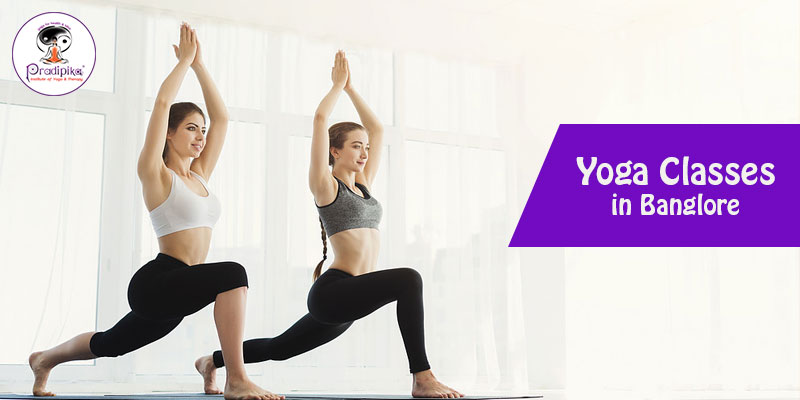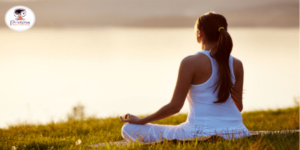Raja yoga is assumed to be one of the classical divisions of the yoga tradition. Genuinely, the term ‘Raja Yoga’ implies the highest state or peak of yoga. Raja means royal because it allows the yogi to reach the illustrious king inside oneself, the supreme self or anatman. If you wish to learn Raja Yoga, then hurry up & join the yoga classes in Bangalore.
In the modern backdrop of the term, Raja Yoga is often related to Patanjali Yoga, otherwise known as Ashtanga Yoga. But Patanjali did not call his system Raja Yoga throughout his teachings. Instead, the best approach is that we study Patanjali Yoga as a precise system under the wider structure of Raja Yoga.
The term Ashtanga refers to the eight limbs. In Patanjali Yoga Sutra, eight limbs stand for eight different phases of the yogic discipline, which are also known as the eight key elements of Raja Yoga.
Now let’s learn more about these eight key elements of Raja Yoga before you opt for yoga classes in Bangalore.
1. Yama (Self-Control)
Five Yamas tunes the external expressions of the person concerning his social contacts in the society & they are:
- Ahimsa (Non-Violence)
Ahimsa means neither to cause pain nor harm to any life-form by thought, deed, or word. Ahimsa also implies not to kill. In the Patanjali Yoga sutra, Ahimsa has been portrayed as the defection of hostility from a person’s vicinity meaning mind, action, body, & emotions.
You should join yoga classes in Bangalore to learn Raja Yoga & along with you can learn more about Ahimsa.
- Brahmacharya (Pure Way of Life)
It’s often translated as sensual abstinence. But it comprises of much more. Brahmacharya means your thoughts must at all times be turned towards divinity. However, this does not imply that you should neglect our responsibilities in this world.
To know more, opt for yoga certification courses in Bangalore.
- Satya (Truthfulness)
- Asteya (Non-Stealing)
- Aparigraha (Non-Accumulation of Possessions)
2. Niyama (Discipline)
consists of 5 principles:
- Shauca (Purity)
It is not just external purity, but more substantially, inner purity. Our body, our clothing, as well as our feelings & thoughts must be pure. The same also holds for the individuals we associate with.
- Santosh (Contentment)
- Tapa (Self-discipline, Self-Control)
- Svadhyaya (Study of the Holy Scriptures)
- IshvaraPranidhana (Devotion to God)
Learning Niyama is an important phase to learn before becoming a yoga teacher, but yoga certification courses in Bangalore can help to learn to be made easy for you.
3. Asana (Physical Exercises)
Asana means seat. In Patanjali Yoga Sutra, it is defined as a seat of meditation. Moreover, in the Raja Yoga tradition, yoga postures are primarily utilized as a seat to meditate.
To learn more about Asanas, the best way is to join yoga classes in Bangalore.
4. Pranayama (Breath Exercises)
In the course of controlling the breath & body, Raja Yogis also accomplished control of the mind. However, this resulted in an awakening of those inner strengths that will continue to guide one on the divine path.
If you wish to walk in that divine path with yoga, then waste no time & go for yoga classes in Bangalore.
5. Pratyahara (Withdrawal of the Senses)
Yoginis are in the position of being capable of directing their mind & senses at will, either outward or inward. Once a person master Pratyahara, he will gain independence from external ailments. One can straight-away withdraw the feelings from external objects, & also, when desired, utilize the senses consciously, with complete awareness.
Generally, Pratyahara is practiced in the initial stages of meditation, which involves keeping your body motionless, the mind quiet, the eyes closed, & directing your attention inward. If you wish to be a yoga teacher, & master Pratyahara, then choosing yoga certification courses in Bangalore will be the right option.
6. Dharana (Concentration)
It means to focus a person’s thoughts & feelings upon a sole object. Usually, you succeed with this for only a short period, then other thoughts enter & distract you. You become aware of your lack of concentration just after a few minutes. Until someone can concentrate on an object or thoughts for any length of time, in any circumstance, we still haven’t mastered Dharana.
7. Dhyana (Meditation)
Every meditation technique is only preliminary exercises for authentic meditation. One can’t just learn how to meditate like one can’t learn to sleep. Meditation happens when your mind is quiet. In meditation, one must be imagination-free because imagination derives from the intellect.
If you wish to become a yoga teacher in the future, then waste no time & opt for yoga certification courses in Bangalore.
8. Samadhi (Complete Realization)
Complete Realisation is where the knower (the individual practicing), knowledge (What is God), & object of knowledge (God) unites & becomes one which means one merges with the supernal consciousness. Those who achieve Samadhi see a heavenly, gleaming light, hear a divine sound, & feel an infinite expanse within themselves. With Samadhi, a Yogi’s consciousness achieves eternal quiet, calmness, & bliss, & the Yogi gets liberated.
Conclusion:
The majestic path of yoga teaches the Raja Yogi the course of self-discipline. This meditation is simple to practice in your day-to-day lives. An individual becomes independent & fearless in his action &behavior. Positive qualities are developed & the yogi achieves peace & happiness.
Wondering how yoga can help improve your health and lifestyle? If you wish to learn & practice yoga, then hurry up & join the Pradipika Institute of Yoga & Therapy. Here we offer a wide range of yoga classes for children, men & women to live a healthier life. For more details, call +91 9611306611. You can also mail us at info@pradipikayoga.in





